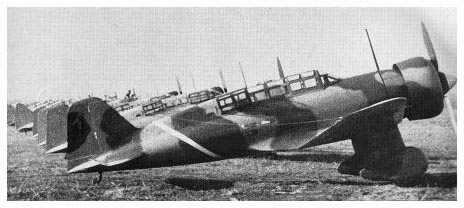WARBIRDS RESOURCE GROUP > IJARC > BOMBERS > PREVIOUS PAGE

|
Type: Light Attack Bomber Origin: Mitsubishi Crew: Two Allied Code Name: Babs Models: Ki-15-I, Ki-15-II, C5M, Karigane First Flight: Karigane Prototype: May 1936 Ki-15-I: Late 1936 Service Delivery: N/A Final Delivery: N/A Production: N/A Powerplant: Ki-15-I: Model: Nakajima Ha-8 Type: 9-cylinder radial engine Number: One Horsepower: 750 hp Ki-15-II: Model: Mitsubishi A.14 Kinsei Type: 14-cylinder two-row radial engine Number: One Horsepower: 800 hp Dimensions: Wing Span: 12m (39 ft. 4¾ in.) Length (Ki-15-I): 8.50m (27 ft. 11 in.) Height: 3.0m (9 ft. 10 in.) Wing Area: N/A |
Weights: Performance: Armament: One 7.7mm Type 89 in outer wing (not always fitted) One 7.7mm Type 89 manually aimed in rear cockpit Bomb Load: N/A |
Inspired in part by the Northrop A-17, this aircraft was a private venture by Mitsubishi in the construction of a stressed-skin monoplane. This aircraft recieved much publicity and was a source of national pride and first saw action in the Sino-Japanese war in 1937. This aircraft was used for level bombing, close support and photo reconnaissance before being eventually replaced by the Ki-30.

Sources:
The Complete Encyclopedia of World Aircraft
WARBIRDS RESOURCE GROUP > IJARC > BOMBERS > PREVIOUS PAGE
